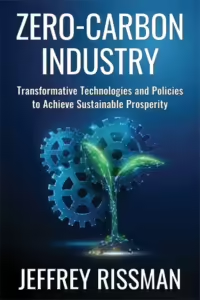This report represents the research and views of the author. It does not necessarily represent the views of the Center on Global Energy Policy. The piece may be subject to further revision. Contributions to SIPA for the benefit of CGEP are general use gifts, which gives the Center discretion in how it allocates these funds. Rare cases of sponsored projects are clearly indicated.
For a full list of financial supporters of the Center on Global Energy Policy at Columbia University SIPA, please visit our website at Our Partners. See below a list of members that are currently in CGEP’s Visionary Annual Circle. This list is updated periodically.
-
CGEP’s Visionary Annual Circle
-
Corporate Partnerships
Occidental Petroleum Corporation
Tellurian Inc.
Foundations and Individual Donors
Anonymous
Anonymous
the bedari collective
Jay Bernstein
Breakthrough Energy LLC
Children’s Investment Fund Foundation (CIFF)
Arjun Murti
Ray Rothrock
Kimberly and Scott Sheffield
Executive Summary
Among the most significant challenges to achieving the Paris Agreement goal of global net-zero CO2 emissions by 2055–2075 is addressing the so-called “hard-to-abate” heavy industrial sectors such as iron and steel, cement and concrete, ammonia, methanol, and high value feedstock chemicals like olefins. These sectors accounted for 7.5 Gt CO2 or 20.4 percent of global emissions in 2021, and global demand for their products will only rise until broad development goals are met everywhere. Moreover, nearly all heavy industrial plants being planned or in construction today are fossil based, with the exception being a handful of small-scale pilot facilities. Given that plants tend to operate for at least 20 years before their first deep renovation, and 40–80+ years overall, these new ones will likely still be in operation by the time global CO2 emissions must be net-zero (~2050–2060), after which heavy industry players that are still emitting will likely need to pay for CO2 removal (CDR) from the atmosphere. The cumulative CO2 emissions between now and then and the likely very high cost of CDR are driving society, governments, and firms to make near-zero emissions the default minimum standard for all new and retrofit facilities by the end of the 2020s.
However, fulfilling that standard is no easy task. The main bottleneck is less technological in nature than financial and market based. At the current state of the art, near-zero emissions plants simply cost more than fossil-based plants, and meanwhile, no demand pull or market exists for lower-emission industrial products. Given the urgency of the task at hand amid the global climate crisis and the current lack of a business case to undertake it, strong policy signals can be used to incentivize early investment in near-zero-carbon heavy industry.
This report, part of the Carbon Management Research Initiative at the Center on Global Energy Policy at Columbia University SIPA, explores financial policy instruments that can make first-of-a-kind (FOAK) near-zero emission industrial facilities viable. The report finds that such FOAKs can then be used as low-risk, replicable models for rapidly transforming the “hard-to-abate” sectors and ultimately facilitating a transition to full net-zero emissions for industry as a whole.
The takeaways of the report are as follows:
- There is no one-size-fits-all policy instrument to trigger FOAKs — policymakers seeking to encourage such projects may instead want to consider packages of policies at various stages of a project’s lifetime that account for both the climate in which that project operates and any risks that could impinge on its success.
- Equitable financial support by governments across industrial sectors and products can be transformational for establishing FOAK projects and getting them off the ground at the lowest possible cost, but in providing that support, governments will need to weigh relative emissions-reduction potential, technological readiness, and the cost premium above existing market prices to maximize effectiveness and efficiency.
- A clear and consistent long-term strategy and policy signal can provide the certainty needed to trigger broader investment in FOAK facilities.
- Long-term policy strategies to transform the most carbon-intense sectoral processes can be politically and economically maintained if: 1) those strategies are tailored to each sector; 2) participation by industry players is initially rewarded and then eventually mandatory; and 3) investment capital is raised privately by the sector, initially with guarantees from government, and full cycle costs are passed through to consumers.
The authors recommend the following measures for getting near-zero-emitting projects to full deployment both in the US and in other developed countries:
- Reduce upfront and ongoing investment and operating risk associated with the first few plants, whether through a first round of direct pay product tax credits (in the US) or contract for difference reverse auction mechanisms (in the EU and other developed economies).
- Create a US federal level and EU-wide tradable zero emissions performance standard for near-zero emissions production, or ideally share one across the advanced economies,which can help maintain market value for green commodities until sufficiently strong and economy-wide carbon constraints (e.g., carbon pricing or near-zero emissions regulations) apply.
- More broadly, embrace an attitude of experimentation that understands failure as the necessary cost of learning.





